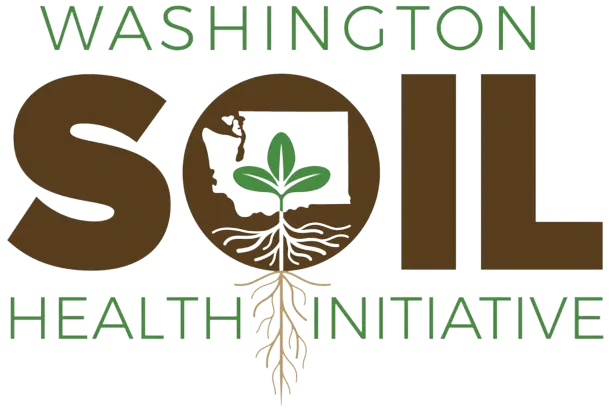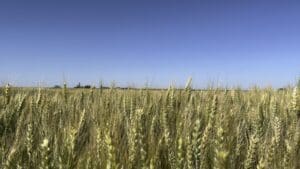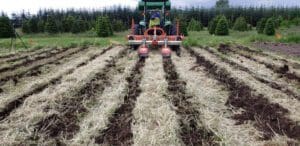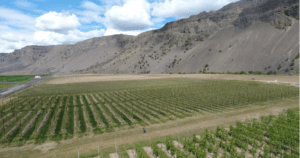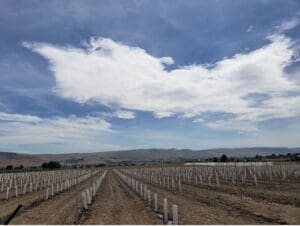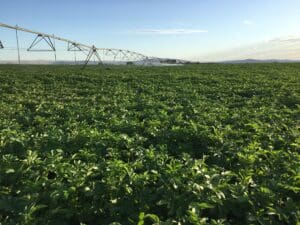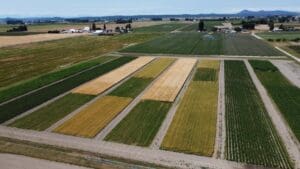
© Molly McIlquham
Six sites, six unique soils, and sixteen crops
The WaSHI LTARE site network translates vital, long-term research into soil health practices across Washington’s diverse agricultural regions.
September 6, 2024
Author: Molly McIlquham
Throughout Washington State, agriculture isn’t just a business—it’s a lifeline. With over 300 different crops generating more than $9 billion annually, the state’s diverse soils and climates are central to its agricultural success. But beneath this agricultural wealth lies a hidden challenge: soil health. This vital aspect of farming can be as varied as the crops themselves, influenced by factors like climate, soil composition, and farming practices.
Some of the top crops grown in the state’s diverse soils include apples, wheat, potatoes, and grapes. A variety of factors can impact a soil’s ability to support crops, animals, and humans—what might be called soil health.
To tackle this complexity, the Washington Soil Health Initiative (WaSHI) is taking two approaches to further understand soil health and how to improve it. Their strategy involves two key components: the State of the Soils Assessment and establishing a network of Long-Term Agroecological Research and Extension sites, known as LTAREs.
A lasting long-term investment
Thanks to substantial state funding, the WaSHI LTARE network stands out as one of the most concentrated of its kind. This network is unique not just in its scale but in its approach, integrating state-of-the-art research with practical, on-the-ground applications—some with field-scale trials! While similar networks exist, such as the USDA's Long-Term Agroecological Research (LTAR) Network, Washington’s model is distinct in its state-driven support and regional focus.

REGIONAL FOCUS | Six long-term agroecological research and extension (LTARE) sites have been established through WaSHI across Washington state.
Washington’s varied precipitation patterns create a complex backdrop for soil management practices. Parts of the state receive less than half the precipitation of others, making it difficult to apply the same soil management practices across the entire state, even within the same crop types. The diversity of these sites—from the potato fields in Othello to the wine grape vineyards in Prosser—reflects the state’s agricultural breadth and the nuanced approach needed to address soil health.
In addition to diversity in climate, soils, and crops, Washington also has a wide range of farm economics. Sixty percent of farms make less than $10,000 annually, while 7% manage nearly 50% of the acres farmed in Washington (USDA WA Census Data). This economic variability means soil health practices must be scalable and relevant to each farming region.
Across the LTARE site network, WaSHI is working to promote positive soil health outcomes across the state’s diverse food production zones by:
- Building statewide capacity to implement soil health practices
- Showcasing and refining soil health research and practices
- Building statewide awareness and understanding of soil health-building practices
- Supporting technical assistance capacity through training and on-farm demonstration projects
While each LTARE site has its own focus, common threads link their research. Indicators like aggregate stability and potentially mineralizable nitrogen (and many others) are measured across all sites, allowing for a comprehensive understanding of soil health. These metrics help compare data and develop practices that can be adapted to various agricultural settings.
Economic considerations also play a critical role. Researchers are not only assessing soil health but also evaluating the cost-effectiveness of different practices. This approach ensures that the recommendations are practical and financially viable for farmers, helping them adopt soil health practices that are beneficial for the viability of Washington’s food system.

FINDING SIMILARITIES | While each of the sites are incredibly different, many are evaluating similar soil health practices like organic matter additions and cover crops.
The sites
Dryland Cropping Systems with Livestock LTARE site
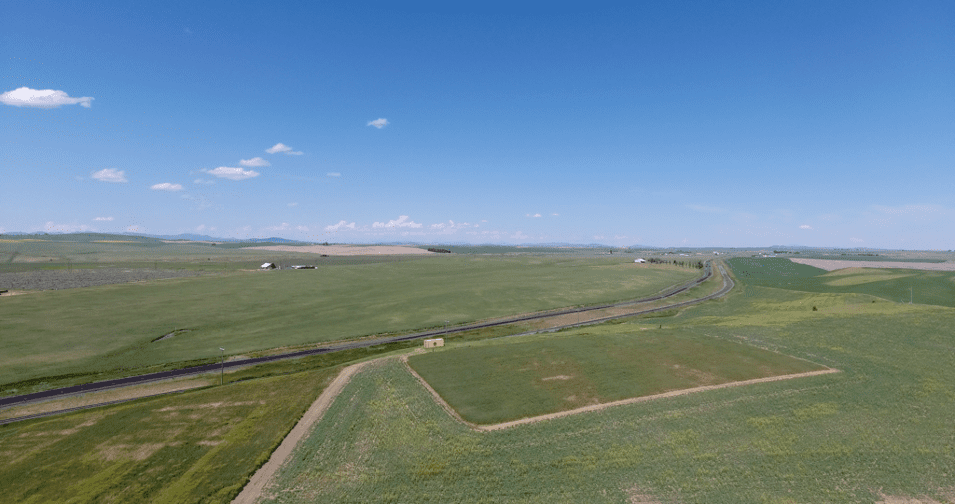
LIVESTOCK INTEGRATION | Dryland producers in the area are looking to learn whether or not it's possible to integrate livestock into their cropping systems both logistically and economically.
© Molly McIlquham
Location: WSU Wilke Farm, Davenport, WA
Soil Type: Broadax silt loam
Annual Precipitation: 14 in
Main Crops: Winter wheat, a spring cereal crop, a multi-function crop (some may call this a cover crop), and, while not a crop, livestock.
Key objective: Increase the implementation of soil health management across eastern Washington to improve soil health and promote economically sustainable farms.
Learn more about this LTARE site
Diversified Organic Systems with Livestock LTARE site
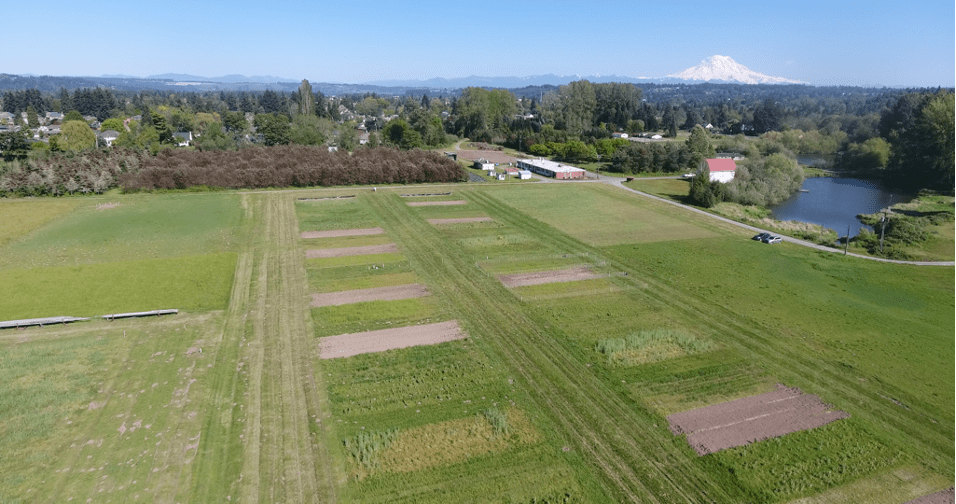
DIVERSIFICATION | Crop rotations in organic vegetable systems are generally diverse, but adding livestock through a ley pasture system builds even more diversity.
© Molly McIlquham
Location: WSU Puyallup Research and Extension Center, Puyallup, WA
Soil Type: Puyallup fine sandy loam
Annual Precipitation: 40 in
Main Crops: Peas, broccoli, winter squash, grains, ley pasture (temporary pastures that are integrated into crop sequences), and, while not actually a crop, sheep.
Key objective: Improve the sustainability and resilience of vegetable producers in the Maritime Pacific Northwest
Learn more about this LTARE site
Central Washington Tree Fruit Systems LTARE Site

ORCHARD SCALE TRIAL | A benefit of this LTARE site and others is their ability to use commercial equipment used by producers in the region to reflect what can be realistically adopted accurately.
© Molly McIlquham
Location: WSU Tree Fruit Research and Extension Center, Wenatchee, WA
Soil Type: Pogue fine sandy loam
Annual Precipitation: 9 in
Main Crops: Honey Crisp apples (soon to be added Skeena cherries)
Key objectives:
- Establish best practices and standard operating procedures for optimal soil health.
- Reduce variability in orchards with organic matter amendments or other soil health-building practices.
- Reduce bitter pit and other disorders related to nutrient uptake and water/plant stress.
- Establish soil health practices that conserve water and buffer environmental stress in the face of climate change.
- Identify long-term sustainable approaches to managing soil-borne diseases and nematodes.
Learn more about this LTARE site
Eastern Washington Wine Grape Systems LTARE Site
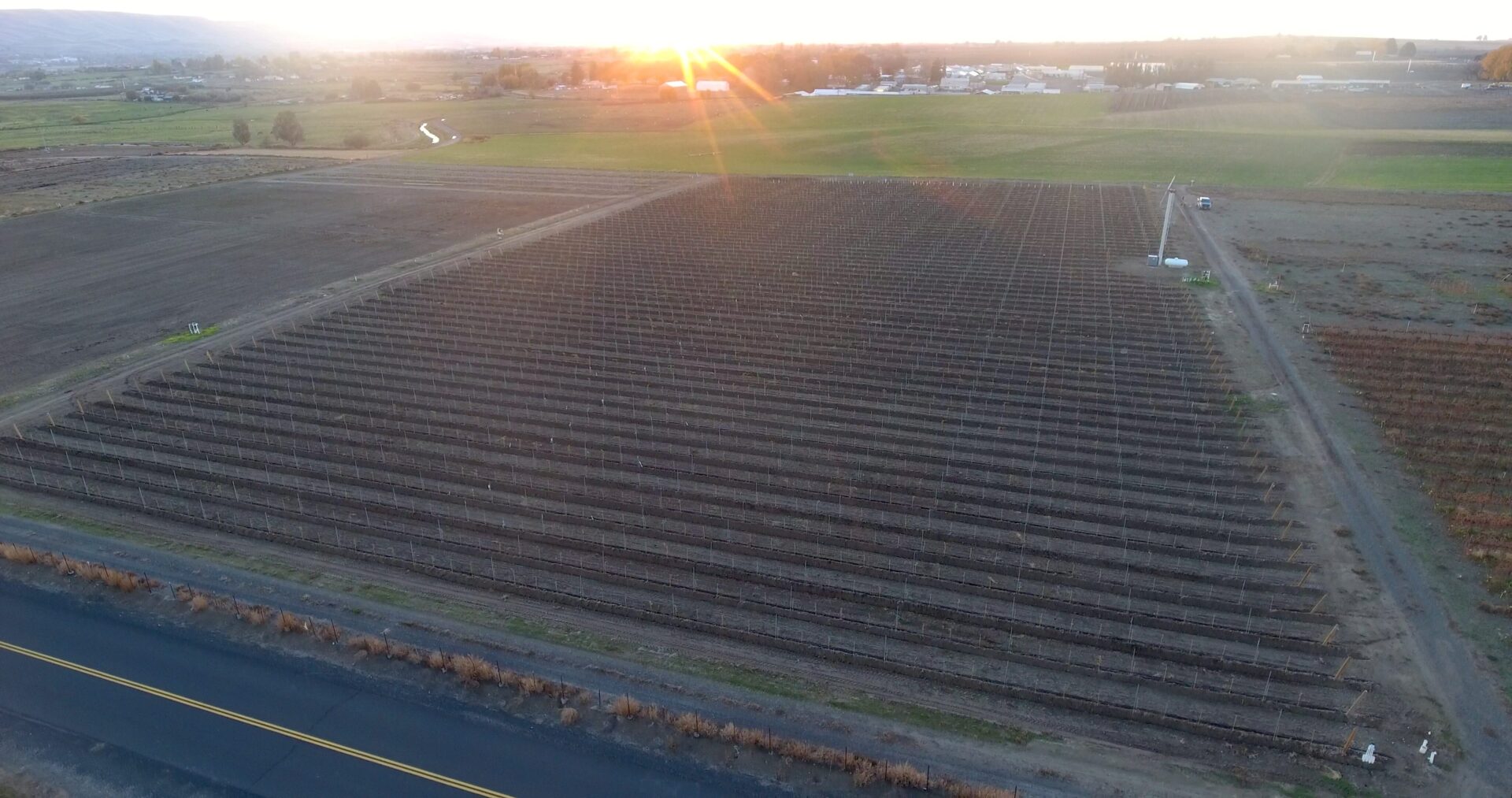
COLLABORATIONS | Beyond funding from WaSHI, the Eastern Washington Wine Grape Systems LTARE site brings in funding from USDA-ARS and the Washington Wine Commission, underpinning the importance of the research in the industry.
© Molly McIlquham
Location: WSU Irrigated Agriculture Research and Extension Center, Prosser, WA
Soil Type: Warden silt loam
Annual Precipitation: 9 in
Main Crops: Chardonnay and Cabernet Sauvignon wine grapes
Key objective: Evaluate and identify the influence of vineyard management practices on soil health and its impact on grape and wine quality
Learn more about this LTARE site
Irrigated Potato-Based Cropping Systems LTARE Site
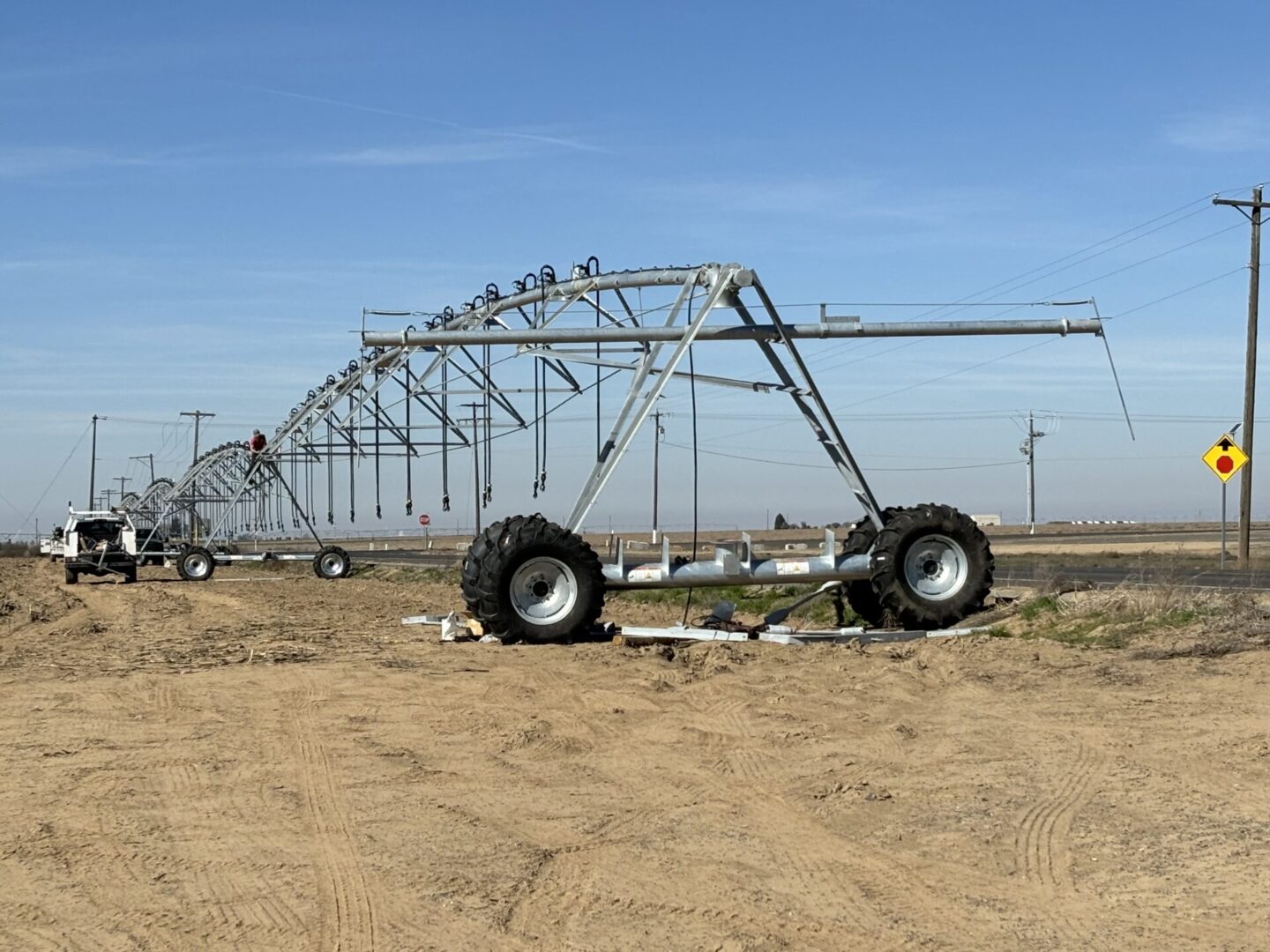
INVESTMENT | Each LTARE site requires significant investment. The Irrigated Potato-Based Cropping Systems LTARE site, with its varied irrigation and fertilization rates, required a complex irrigation setup that can be highly customized.
© Steve Culman
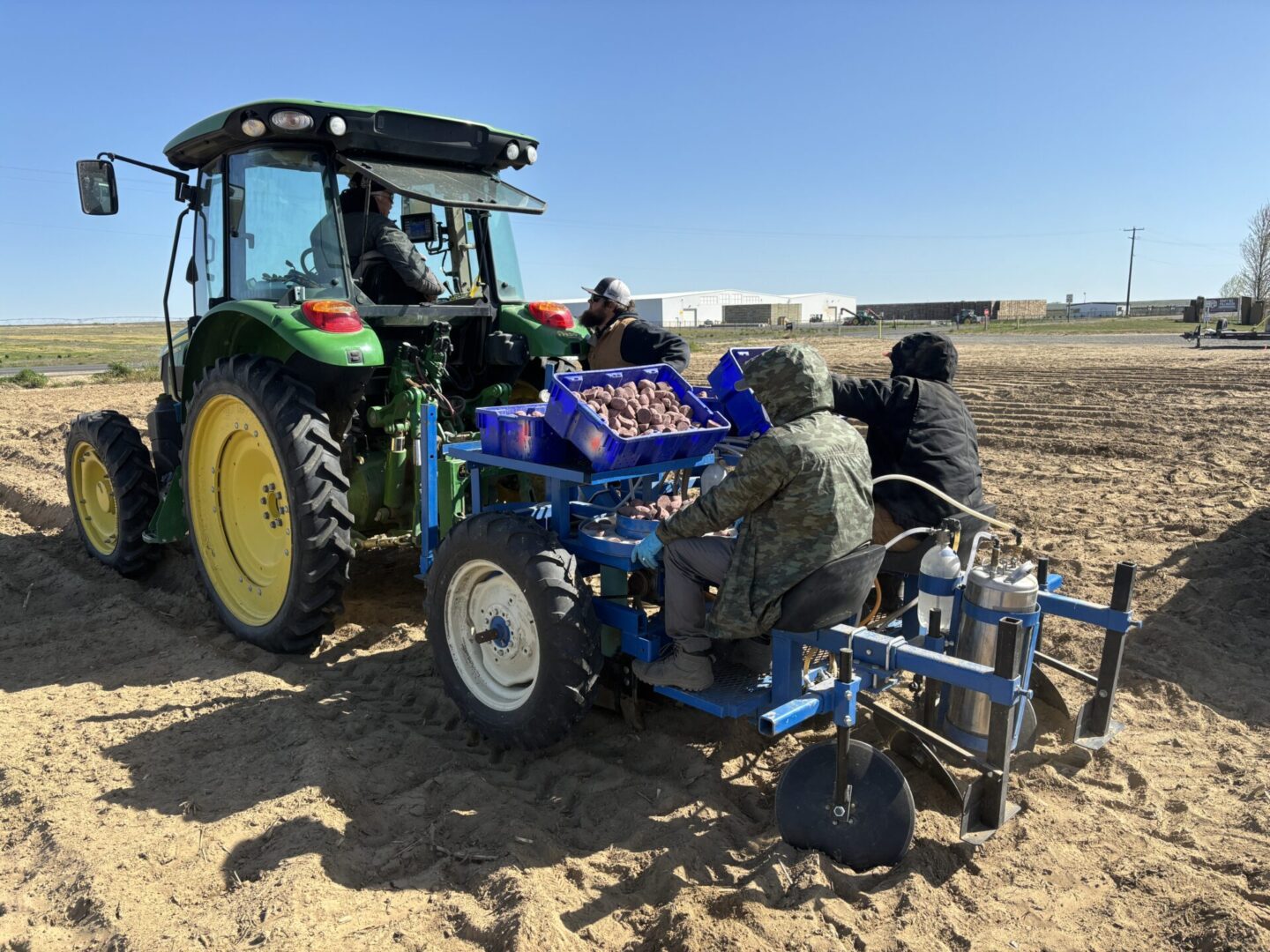
SCALEABLE | With research trials, often commercial equipment is too large, so smaller equipment, like this potato planter, is used. However, researchers are careful to make sure that the practices will work on a large scale.
© Steve Culman
Location: WSU Honey Bee Research Facility, Othello, WA
Soil Type: Shano silt loam
Annual Precipitation: 8 in
Main Crops: Potatoes, wheat, and corn
Key objective: Understand how crop rotation length, fumigation, bio-fumigants, and compost impact disease suppression and overall soil health.
Learn more about this LTARE site
Northwest Washington Potato-Based Annual Cropping Systems LTARE site
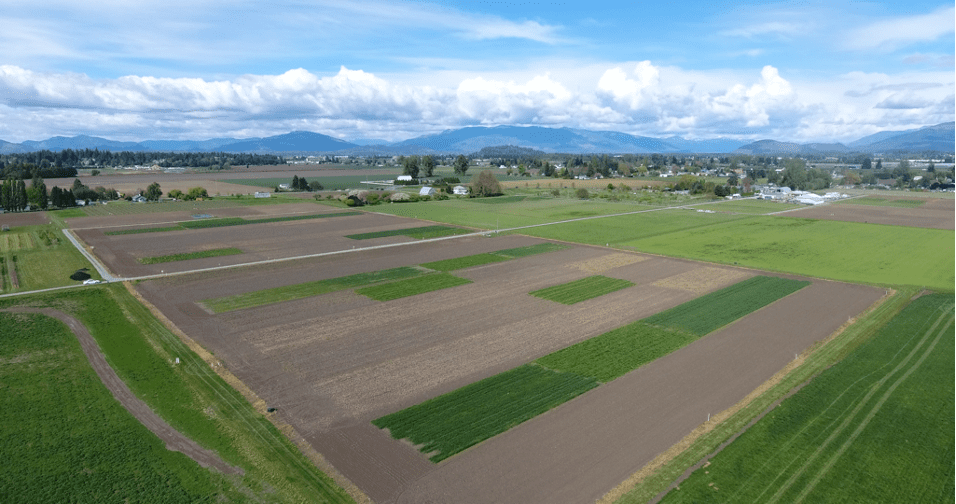
THE BEGINNING | The NW WA Annual Cropping Systems LTARE was the first site in the network to be established. Setting an example for the network as a whole.
© Molly McIlquham
Location: WSU Northwestern Washington Research and Extension Center, Mount Vernon, WA
Soil Type: Skagit Silt Loam
Annual Precipitation: 33 in
Main Crops: Potato, spring barley, silage corn, and winter wheat
Key objective: Identify and promote management practices that enhance soil health, carbon sequestration, and the environmental and economic sustainability of agricultural systems in northwestern Washington.
Learn more about this LTARE site
Looking forward. For a long time.
Long-term agricultural research on soil health is essential for creating resilient food systems, tracking changes in soil carbon, and measuring economic benefits. To truly understand the impact of management on soil health and productivity, research must extend beyond typical grant cycles.
The insights gained from these LTARE sites are more than just local findings; they contribute to a global conversation about sustainable agriculture. As pressures from climate change and the loss of productive soils increase, the research conducted at these sites offers valuable lessons on maintaining soil health and agricultural productivity.
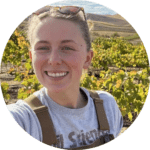
Molly McIlquham
Molly an Extension Coordinator at Washington State University where she works to share soil health information from the Washington Soil Health Initiative.
This article was published by the Washington Soil Health Initiative. For more information, visit wasoilhealth.org. To have these posts delivered straight to your inbox, subscribe to the WaSHI newsletter. To find a soil science technical service provider, visit the Washington State University Extension website or the Washington State Conservation District website.

